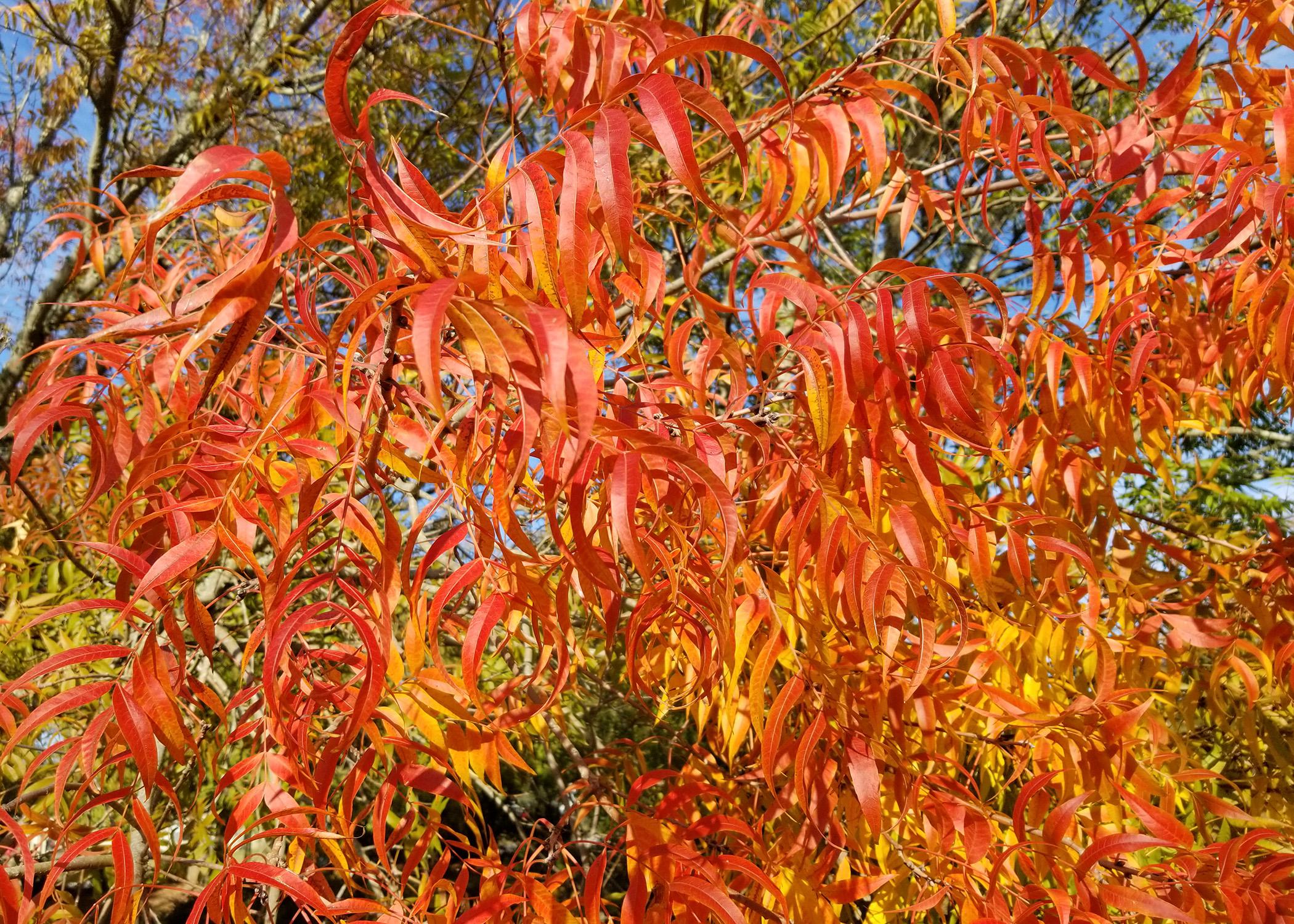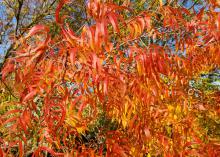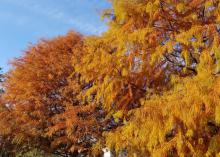Information Possibly Outdated
The information presented on this page was originally released on November 18, 2019. It may not be outdated, but please search our site for more current information. If you plan to quote or reference this information in a publication, please check with the Extension specialist or author before proceeding.
Leaf structure explains marvel of fall color change
I am thoroughly thankful I made the move to coastal Mississippi a dozen years ago. One of my truly enjoyable fall pursuits happens after the temperatures have gotten chilly. On bright, sunny fall days, I really like driving on Highway 90 to my office at the Coastal Research and Extension Center in Biloxi along the Gulf of Mexico.
While this is a great, cool fall drive, I do miss the fall season in my native Michigan. The fiery reds, oranges and yellows of the oaks, maples and other hardwoods are awe-inspiring in good years and plain gorgeous in off years. Throw in a few purples, and great color contrasts are created.
It’s almost as if the trees are displaying these colors in one last burst of excitement and intensity before the cold of winter sets in. In my youth, I never remember there being an off year for fall color.
Now, our fall colors aren’t as spectacular in Mississippi, but we do have trees that put on a show. Many of the crape myrtle selections have a brief period of bright reds and oranges before the leaves drop.
Bald cypress is an example of a conifer that loses its leaves each year with the delicate leaves turning bright yellow and burnt orange.
Black gum, a 2019 Mississippi Medallion winner, has its glossy, dark summer foliage turn a variety of red, orange, purple and yellow, often on the same tree at the same time.
Another good tree for fall color is Chinese pistache with its long, compound leaves turning brilliant shades of red and orange.
The marvel of the fall color change can be a mystery, but it’s easily explainable when we look at the function and structure of the leaves themselves. The leaves’ primary function is to absorb sunlight to allow the plant to perform the miracle of transforming light energy into chemical energy -- in other words, sugars -- that the plant uses for growth.
Remember from science class that the process of light absorption is called photosynthesis.
I know you’re thinking, “Okay, the leaves absorb sunlight, but where do the fall colors come from?”
Sunlight is composed of different wavelengths of light, and each wavelength is a different color. We have all seen these different wavelengths and colors of light before. The best example is a rainbow arching across the sky after a rain shower.
Leaves have many pigments that absorb these different wavelengths of light. The primary pigment in a leaf is chlorophyll, which absorbs blue and red light. Leaves are green because chlorophyll reflects the green portion of sunlight and masks the orange and yellow pigments (carotenoids) and the red, blue and purple pigments (anthocyanins).
But where do the fall colors come from? During this period, there are strong environmental signals occurring. The days are getting shorter, and night temperatures are dropping. Trees can sense these changes, and nutrients -- including chlorophyll -- are recycled from the leaves and moved to the roots for use next year. Once the chlorophyll is gone, the other pigments become visible.
So, while we don’t get to view the extreme watercolor-like vistas of fall color seen in more northern climes, I think we should appreciate some of the autumn color-producing trees we have growing all around us.




